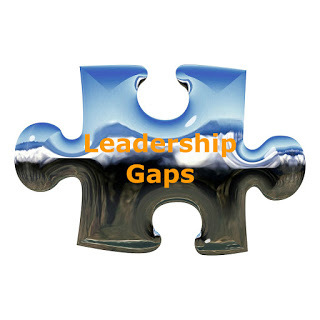The New Book “Digital Gaps” Chapter 2 Introduction: Digital Leadership Gaps
 Digital means hyperconnectivity, fierce competition, and “VUCA” digital normality. Successful companies need to keep growing and innovating, and developing the next generation of leadership is one of the best ways to do that. The variety of management studies shows that there are significant leadership gaps for innovation and digital transformation. The traditional cookie-cutting matching leadership development approach more possibly lands a homogeneous follower, not discover an authentic leader. And traditional talent pool is not large enough to select authentic, creative and dynamic digital leaders who can lead more effectively in today’s complex global business environment. The change comes from the top. If you are not taking steps now to shrink that leadership gaps, you will not be prepared to lead the digital business in the future. But more specifically, how to identify and close digital leadership gaps?
Digital means hyperconnectivity, fierce competition, and “VUCA” digital normality. Successful companies need to keep growing and innovating, and developing the next generation of leadership is one of the best ways to do that. The variety of management studies shows that there are significant leadership gaps for innovation and digital transformation. The traditional cookie-cutting matching leadership development approach more possibly lands a homogeneous follower, not discover an authentic leader. And traditional talent pool is not large enough to select authentic, creative and dynamic digital leaders who can lead more effectively in today’s complex global business environment. The change comes from the top. If you are not taking steps now to shrink that leadership gaps, you will not be prepared to lead the digital business in the future. But more specifically, how to identify and close digital leadership gaps?
The gaps between leadership and management: A fundamental purpose of leadership is to provide vision and empower change while a fundamental goal of a manager is to oversee the tasks and execution. Great leaders inspire people to think broader for catching the holistic picture and to think deeper to understand things underneath the surface. They invite debates and challenges from employees for innovative ideas. Whereas, the managers merely administer and execute the assigned functions with an aim to achieve targeted results. Great leaders not only have great vision, but are realistic towards making it happen, and have a great manager to compliment the execution process. The primary role of leadership is about creating change while the primary objective for management is creating order. Challenging beliefs, ideas, and strategies along with accepted ways of doing things are all hallmarks of leadership. Being a leader can on occasion feel isolating, however, by following your instinct, you will more often than not turn the situation around and produce a positive outcome. A great manager does need to lead “at times,” and a great leader does need to manage “at times,” however, at the very core, great managers, and great leaders are both critical to every organization and we should respect both of the roles which are often interdependent, with complementary skill sets.
The trust gaps: The progressive business relationship and society are built on mutual trust and respect, not power and status quo. This is particularly important at the dawn of digital age because the business and the entire world become so hyperconnected and interdependent. However, many organizations are still running in a command and control mode and live in the working environment lack of trust. One thing that is true, fear and anger operate on the lowest level and can do little more than creating orders in the short term. Trust is not straightforward, but multifaceted. When leaders realize that if you want to achieve greatness in your realm, you will have to touch the upper levels, thus eliminating fear, anger, or other negative emotions. In order to close the trust gap, continue to see the importance of dealing with blind spots by learning how to be quick to listen slow to speak and slow to anger. Leadership mindset and behavior have been found to be the most influential elements in building trust. Trust starts with oneself, the mind, and grows outward to the people and the environment, just like changes. Mutual trust is that linchpin without which leadership is hollow and ineffective.
 The vision gaps: Top leadership roles are supposed to be the guiding force in the enterprise, envisioning and leading the business towards its future. Closing the vision gap is in fact to close the leadership authenticity gap. Leadership is about the future and change, innovation and progress which are all based on the clear vision. The best vision is insight, and the most wanted vision is foresight, the vision thing is, in fact, the precious leadership trait to bridge the industrial age and the digital era, the local and global understanding. A visionary leader changes the course of the business by seeing beyond what all others see or by charting new revenue or growth through the creation of new products, services, business models or market share, etc. And C-level executive needs to be a visionary, because vision is an integral part of the leadership or directorial role. The essence of leadership is to guide directions via removing the obstacles or breaking down the outdated things either hard or soft, visible or invisible, in order to lead forward. Vision doesn’t have to be exclusive or externally focused. In most cases, it must be a shared and collaborative vision.
The vision gaps: Top leadership roles are supposed to be the guiding force in the enterprise, envisioning and leading the business towards its future. Closing the vision gap is in fact to close the leadership authenticity gap. Leadership is about the future and change, innovation and progress which are all based on the clear vision. The best vision is insight, and the most wanted vision is foresight, the vision thing is, in fact, the precious leadership trait to bridge the industrial age and the digital era, the local and global understanding. A visionary leader changes the course of the business by seeing beyond what all others see or by charting new revenue or growth through the creation of new products, services, business models or market share, etc. And C-level executive needs to be a visionary, because vision is an integral part of the leadership or directorial role. The essence of leadership is to guide directions via removing the obstacles or breaking down the outdated things either hard or soft, visible or invisible, in order to lead forward. Vision doesn’t have to be exclusive or externally focused. In most cases, it must be a shared and collaborative vision. There is no one generic set of leadership skills. Effective leadership differs by level, the type of organization, the stage of organizational evolution, the mindset of stakeholders, the complexity of the business, the national and political culture, and many other dynamics. In order to mind the gaps, the leadership principles should be abstracted and highlighted, the criteria need to be refined and clarified, and the leadership development has to be re-tuned and integrated with all other policies and procedures. The key to organizational success is to integrate next generation of leaders, tap into their way of looking at the world, solving problems in a very collaborative working style, to drive the successful digital transformation.Follow us at: @Pearl_Zhu
Published on March 25, 2017 23:23
No comments have been added yet.



